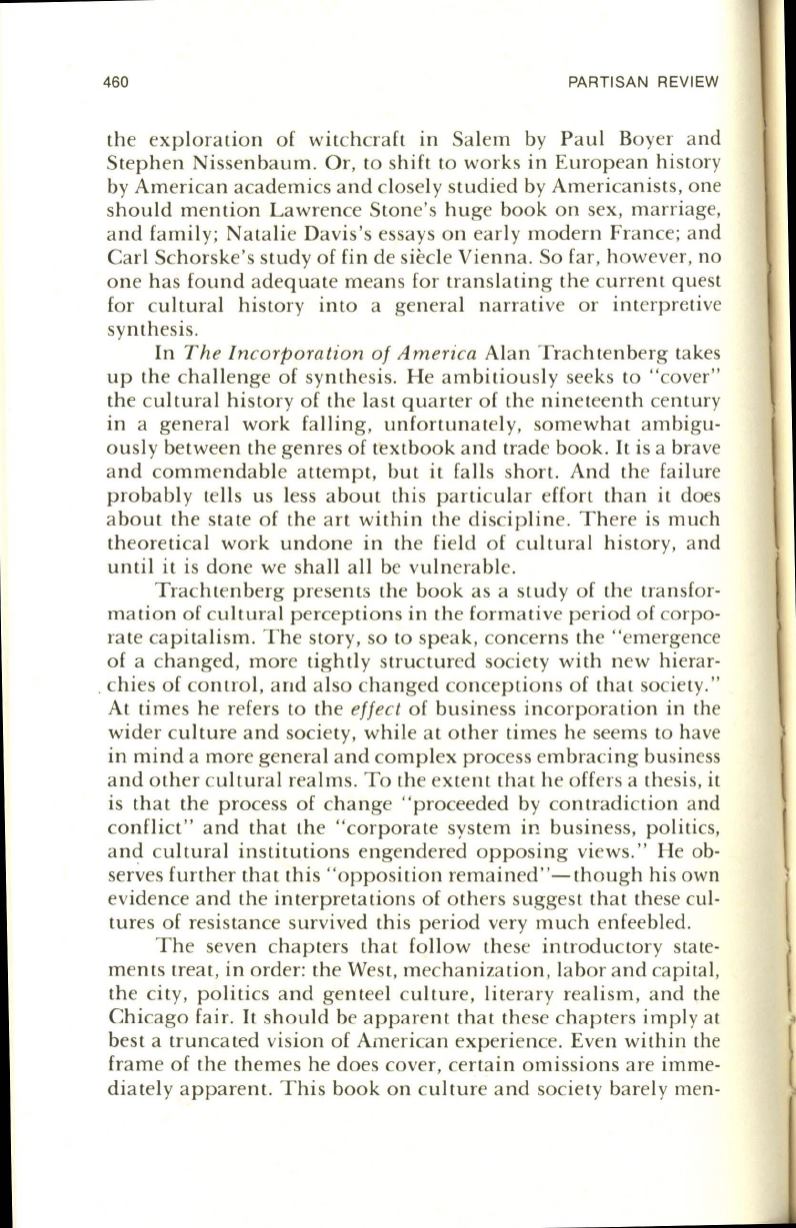
460
PARTISAN REVIEW
the exploration of witchcraft in Salem by Paul Boyer and
Stephen Nissenbaum. Or, to shift to works in European history
by American academics and closely studied by Americanists, one
should mention Lawrence Stone's
huge
book on
sex,
marriage,
and family; Natalie Davis's essays on early modern France; and
Carl Schorske's study of fin
de
siecle Vienna. So far,
however,
no
one has found adequate means for translating the current quest
for cultural history into a general narrative or interpretive
synthesis.
In
The Incorporation of America
Alan Trachtenberg ta kes
up the challenge of synthesis. He ambitiously seeks to "cover"
the cultural history of the last quarter of the nineteenth century
in a general work falling, unfortunately, somewhat ambigu–
ously between the
genres
of textbook and trade book.
It
is a brave
and commendable attempt, but it falls short. And the failure
probably tells us less about this particular effort than it
does
about the state of the art within the discipline.
There
is much
theoretical work undone in the field of cultural history, and
until it is done
we
shall all
be
vulnerable.
Trachtenberg presents the book as a study of the transfor–
mation of cultural perceptions in the formative period of corpo–
rate capitalism. The story, so to speak, concerns the "emergence
of a changed,
more
tightly structured society with new hierar-
, chies of control, and also changed conceptions of that society."
At times he
refers
to the
effect
of business incorporation in the
wider culture and society, while at other times
he seems
to have
in mind a
more
general and complex process embracing business
and other cultural realms. To the extent that
he
offers a thesis, it
is that the process of change "proceeded by contradiction and
conflict" and that the "corporate system in business, politics,
and cultural institutions engendered opposing views." He ob–
serves
further that this "opposition remained"-though his own
evidence and the interpretations of others suggest that these cul–
tures of resistance survived this period very much enfeebled.
The seven chapters that follow these introductory state–
ments treat, in order: the West, mechanization, labor and capital,
the city, politics and genteel culture, literary realism, a nd the
Chicago fair.
It
should
be
apparent that these chapters imply at
best a truncated vision of American experience. Even within the
frame of the themes
he
does cover, certain omissions are
imme–
diately apparent. This book on culture and society barely men-
\


